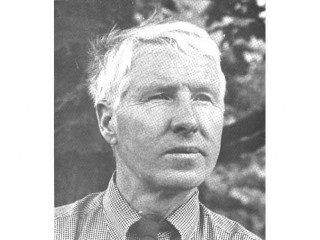
Dan Kiley biography
Date of birth : 1912-09-02
Date of death : 2004-02-21
Birthplace : Boston, Massachusetts, U.S.A
Nationality : American
Category : Arhitecture and Engineering
Last modified : 2011-10-03
Credited as : modernist style, landscape architect,
1 votes so far
Growing up in Boston, Kiley had little extra money. As a teenager he entertained his dates by taking them to the Arnold Arboretum. That early experience along with his interest in golf courses culled from his work as a golf caddy led him to discover the field of landscape architecture. After he graduated from high school in 1930, Kiley became an apprentice under Boston-based landscape architect Warren H. Manning, who had worked for years with another premier landscape architect Frederick Law Olmsted-designer for Central Park in New York City. In 1936, Kiley attended the Graduate School of Design at Harvard part-time for two years while continuing to work for Manning. Unfortunately, Kiley's ideas about design differed significantly with the focus of the Harvard curriculum.
In 1938, Manning died, leading to the closure of his firm and ending Kiley's hopes of becoming a partner. Kiley ended up moving to Washington, D.C., where he partnered with architect Louis Kahn in the U.S. Housing Authority designing housing projects. During this time Kiley worked hard to improve his skills by creating practice designs on a daily basis. He also wrote articles for Architectural Record, often criticizing the current trends and calling for a change in focus in landscape architecture; one that was functional and modern while also fulfilling the need of urban dwellers to experience nature.
During World War II, Kiley started out in the field artillery, but his skills were in demand by the Office of Strategic Services. He became chief of design. Working for the Office of Strategic Services gave Kiley the opportunity to design the courtroom at the Palace of Justice in Nuremburg, Germany, where the war crimes of the Nazis were tried. His stint in Europe also allowed him to tour some of the world's most historically significant sites. One of the most influential upon Kiley was the gardens of the Palace of Versailles. The symmetry and control that its designer, André Le Nôtre, created in the gardens inspired much of Kiley's subsequent work.
After the war, Kiley returned to the United States to open his own office. He tried a few different locations before settling in Charlotte, Vermont. Kiley lived on a 350-acre farm with his wife, Anne, and their eight children. The family entertained often and enjoyed the rural life replete with swimming, boating, and camping. Douglas Martin reported in the New York Times that Kiley once stated that he was inspired by the land around him and that he did his best work there because it made him happy.
This post-war era was the beginning of a long period of productivity and work for Kiley. He teamed with architect Eero Saarinen several times on major projects. In 1947 they worked on the Jefferson National Expansion Memorial in St. Louis-which led to the St. Louis Arch. Unfortunately, Kiley was removed from the team before the project finished and his landscape designs were not implemented. In 1955 he and Saarinen designed the Miller house and grounds. In 1963, they collaborated on the designs for Dulles Airport in Washington, D.C. His later designs included gardens for the Air Force Academy in Colorado Springs, Colorado, and the Oakland Museum in California.
Kiley never formally taught nor did he write treatises on his philosophy of design. Instead he focused on his personal designs while also mentoring inexperienced landscape architects. He was called upon by President John Kennedy to serve on his advisory council. In later years his contributions and talent were well recognized and awarded. In 1997, President Clinton awarded him the National Medal of Arts. In 2002, he was given the National Design Award for lifetime achievement by the Smithsonian's Cooper-Hewitt National Design Museum. Also in 2002, he was made an honorary Fellow of the Royal Institute of British Architects.
Kiley died on February 21, 2004, after a period of illness; he was 91. Kiley is survived by Anne, his wife of 61 years; his eight children, 19 grandchildren, and one great-grandson. His designs were a major contribution to and influence on 20th century landscape architecture. Kris Jarantoski, director of the Chicago Botanic Garden told Blair Kamin of the Chicago Tribune, "He had a fresh perspective for Americans on landscape architecture . He reorganized nature."

















